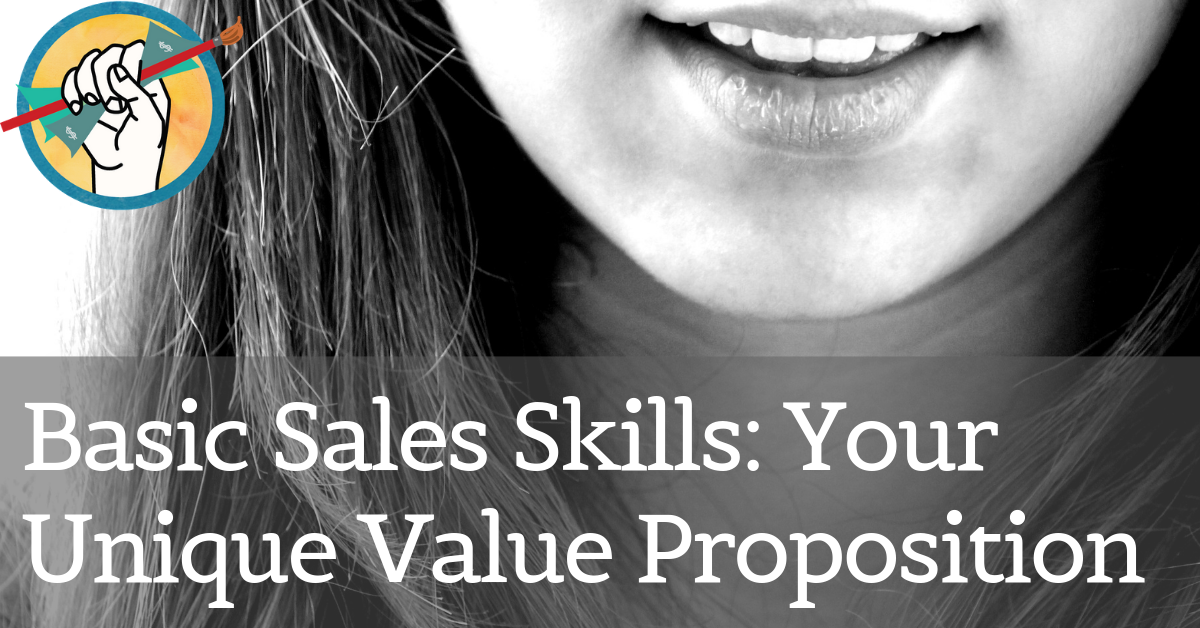During the month of January we’re going to be doing an overview of some basic sales skills every professional artist needs to master. Because like it or not, if you hope to make a living from your art, you’re going to need to know how to sell it.
What exactly is it you’re selling, though? Is it just the physical painting, print or sculpture? Or is it something a little more abstract?

What is a Unique Value Proposition?
Every item that you purchase comes with a value proposition. Ann Rea, who made a six-figure income during her first year in business, explains it this way:
“Being able to define and evaluate what unique value you offer to a particular market.”
Ann Rea is known for painting vineyards. Her unique selling proposition is the unique celebration of the beauty of wine country in an authentic way, as appreciated particularly by enthusiasts of both wine and art.
The secret, for Ann Rea, is color inspired by natural light. She has selected a very specific demographic which defines her market.
Do I Really Have to Limit Myself to One Thing?
A common reaction to the idea of a unique value proposition is this:
“I can’t stand the thought of limiting my art!”
But this couldn’t be further from the truth. Rather, a unique voice with an identifiable look and feel is a basic requirement for a successful art career. If a collector can’t glance at your work and immediately tell who made it, you may have a problem. Let’s consider a famous example of a unique value proposition: Andy Warhol. Why was Warhol so successful?
Andy Warhol was successful due to his strong, uniquely recognizable voice in conjunction with a very specific strategy: celebrating celebrities. He made portraits of celebrity icons and was a master of PR.
How Do I Figure Out My Unique Value Proposition?
Figuring out your unique value proposition is a process that requires you to explore several questions about yourself, your art, and especially about your collectors.
Ask yourself:
- What is unique about your art?
- Why should anyone care?
- Who are you trying to reach with your art?
- Why will someone buy your art? (Is it to fill an emotional need? To make a statement? Something else?)
Ultimately, your unique value proposition is a combination of what you create and what your collectors get out of it. Following this formula, Ann Rea creates unique paintings of vineyards which provide a beautiful and authentic celebration of winemaking for wine and art lovers. You can work through the bulleted questions above until you’ve got an answer that feels authentic to you and your work, and that can really help you sell your art to the people who want it.
Want to learn more?
Listen to our entire conversation with Ann Rea, with a much more in-depth discussion of how she made six figures during her first year in business.
Take a deep dive into discovering your uniquity with How to Sell Your Art Online 101.
For more on sales skills, brush up on your active listening, and check out 10 strategies to improve your art sales.
My Unique Value Proposition
A. What is unique about your art?
My art is unique by way of style or technique.
1) There are not many artist that paint with a pallet knife
2) The way I apply the paint to the canvas
3) I like to use bright, happy colors
4) Confetti!
B. Why should anyone care?
1) If you are interested in investing in art that is very unique, this is it.
2) I have been told by many people they have never seen anybody paint this way
3) I call my style Confetti Impressionism
C. Who are you trying to reach with your art?
1) Collectors that are looking for somebody who is going in a different direction than the rest of the art community
2) The intention of my paintings is to uplift the viewer’s spirit. I want to make people happy when they look at my art. I’m looking for people who are looking for paintings that are positive and not shocking or depressing.
D. Why will someone buy your art? (Is it to fill an emotional need? To make a statement? Something else?)
1) You can say someone who buys my art will be fulfilling an emotional need, maybe someone who wants feel happy or encouraged when they look at it.
2) Artists paint landscapes, flowers and other things all the time, but there are very few that deliberately paint with intention of helping the viewer feel good.